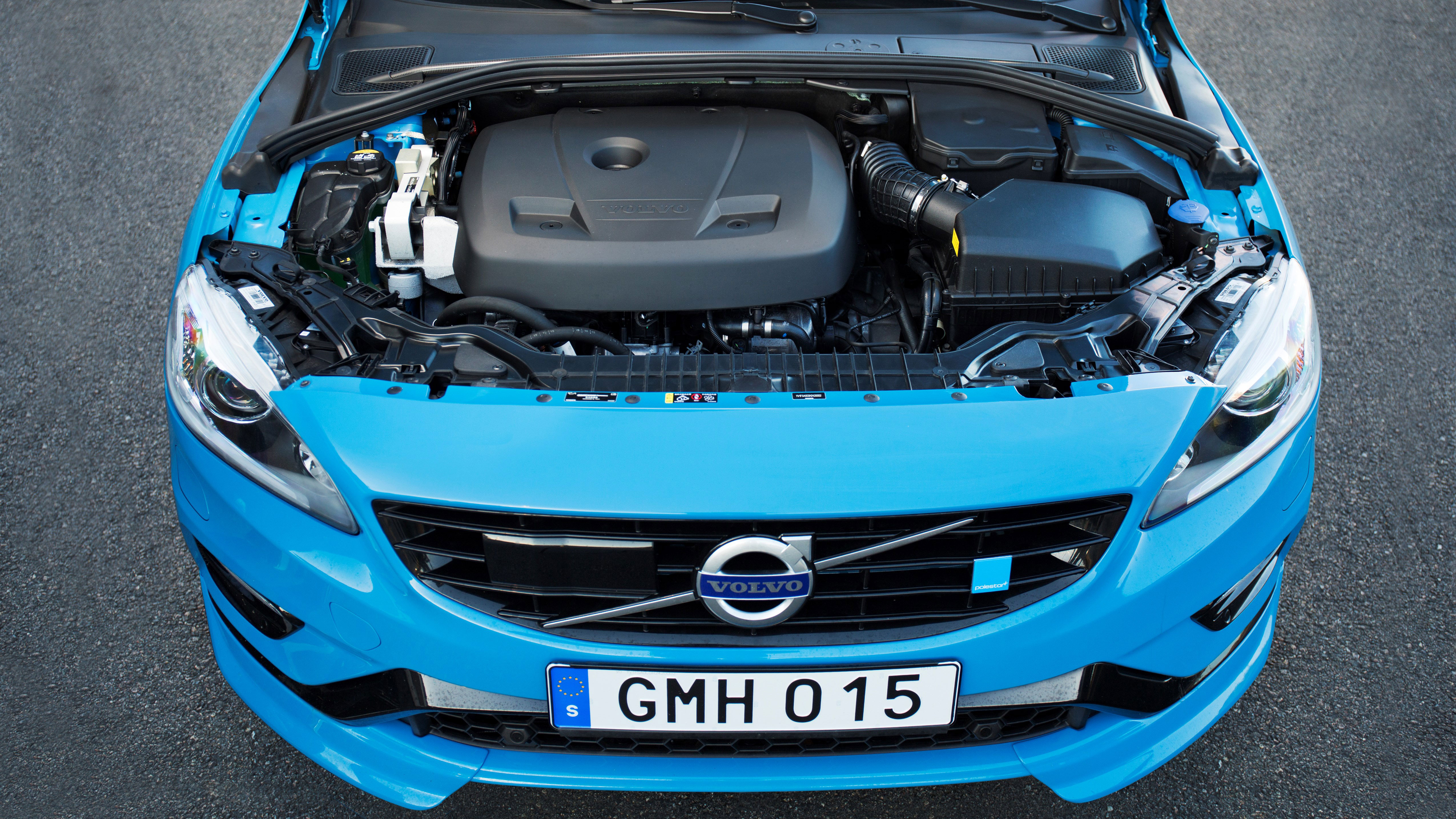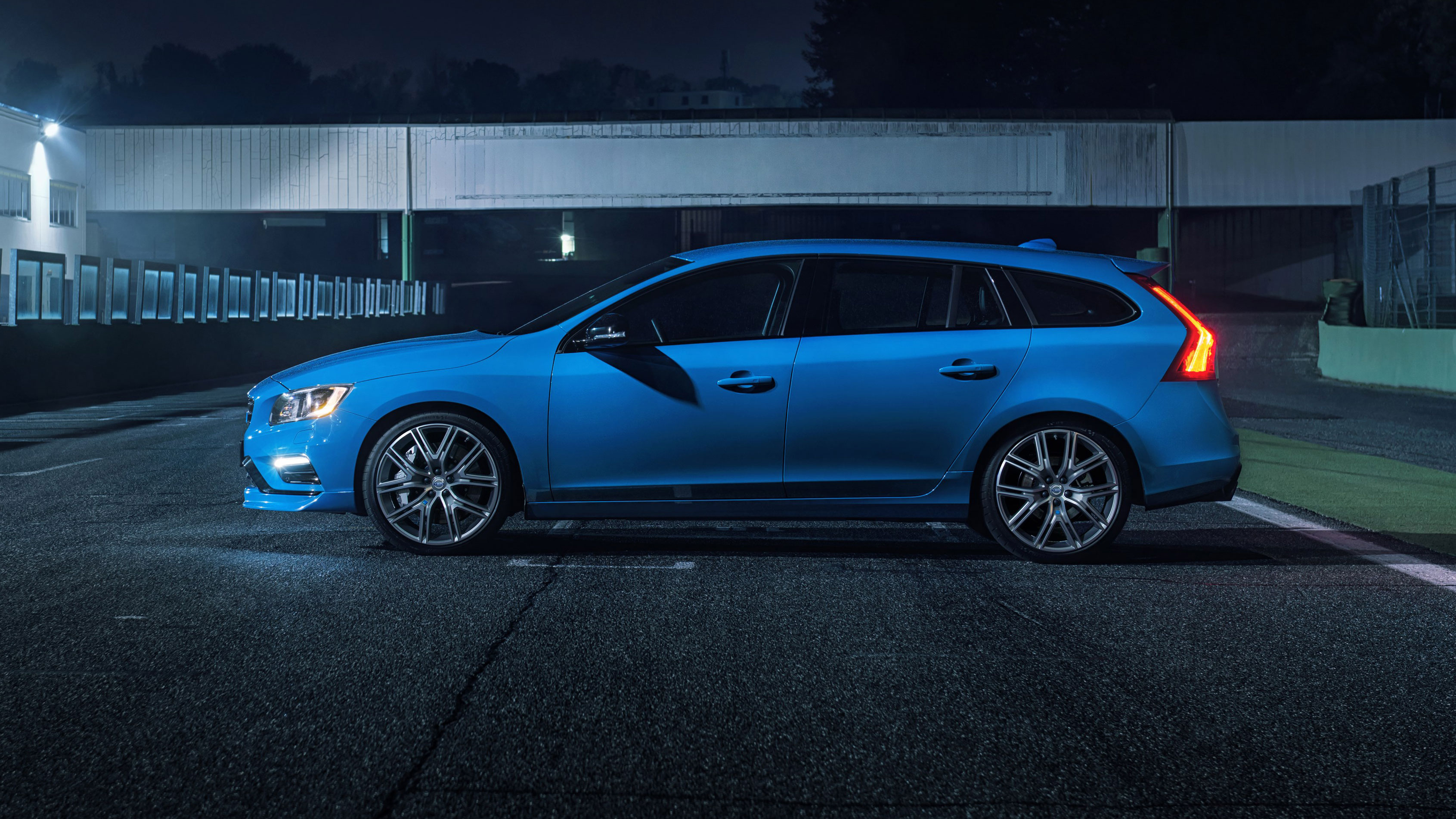
First drive: the new 362bhp four-cylinder Volvo V60 Polestar
What’s this?
This is still a Volvo V60 that’s had a seeing to from Volvo’s now in-house tuning arm Polestar. It’s not been facelifted. But it has got a new, much smaller engine.
Since the Swedes announced a plan to unleash a maelstrom of new cars on a shared platform and make them nigh-on uncrashable, one piece of information has hung in the ether like a spectre. Only four-cylinder engines, from hereon out.
Yes, some would be teamed with electric assistance, as per the XC90 T8 Twin Engine, but with the vice-grip of environmental pressure increasing on petrol and diesel engines, Volvo committed to a four-cylinder turbo-only future. Bye-bye lusty five-pot and throaty straight-six motors.
This left the V60 Polestar rather out in the cold. Because it was powered, you’ll remember, by a 3.0-litre turbocharged straight-six. The critical word in that sentence is ‘was’.
So, what have we got now. A hybrid?
Nope, just the petrol-burning bit in the form of Volvo’s most powerful road-going 2.0-litre four-cylinder turbo ever. One of the world’s pokiest, in fact. The new Polestar wields 362bhp, up from 350bhp in the straight-six car.
It’s turbocharged and supercharged, for mega shove and decent throttle response without the hassle of having to package and cool a bulkier twin-turbo set-up. There's less torque, but it’s a small reduction from 369lb ft to 347lb ft.
To put it another way, imagine if Mercedes took the batty ’45 AMG engine from the hot A-class, and planted it into a C-class estate. That’s the sort of template we’re talking here.
And what are the results?
Top Gear
Newsletter
Thank you for subscribing to our newsletter. Look out for your regular round-up of news, reviews and offers in your inbox.
Get all the latest news, reviews and exclusives, direct to your inbox.
On paper, all good news. In addition to the boosted power, weight is down (despite the multitude of forced induction gubbins) by 24kg at the front axle, and though a new gearbox adds some weight back in, Volvo says it’s shifted the centre of mass back so the car is now better balanced across its axles. The result is you’ll go from 0-62mph in 4.8 seconds (down from 5.0 seconds in the old Polestar), and run on to 155mph.
So we’re not talking full-on C63 AMG or M3 performance, but the V60 will easily keep a milder, similarly 4x4 Audi S4 or Mercedes C450 AMG honest.
It’s also now vastly more economical on the official cycle offering a claimed 34.9mpg (previously 27.7mpg) and emitting 186g/km of CO2.
What’s it like to drive?
Despite the supercharger, the V60 doesn’t leap off the line with a cursory prod of the throttle (it’s an 1,800kg car with a driver inside). The car does start to surge beyond 3,000rpm, and thankfully it’s perfectly tractable and easy to mooch about in. The gearbox is a major boon here, but we’ll talk about that in a moment.
Noise-wise, well, it’s a four-cylinder. So it’s rorty here and blarey there but not overwhelmingly musical, despite the best efforts of an active Feritta exhaust (but no fake speaker cheating inside). Volvo’s a carmaker, not a magician. Four-cylinders rarely sound fruiter than a good six. Same applies here.
It’s quick across the ground once the engine’s wound up, with the supercharger disconnecting via its own little clutch to leave the turbo puffing hard as the revs climb. From 6,000 to 7,000rpm the motor at last comes alive and growls meaningfully, and relishes that last dash to the redline.
Polestar is hugely proud that the 2.0-litre ‘Drive-E’ engine shares internal components with the team’s WTCC racecar – to the point that the parts are entirely interchangeable. At the top of the revs, you finally get the sense there’s some track-honed blood and thunder about the V60.
Now, the gearbox. Wasn’t that one of the ‘old’ Polestar’s Achilles heel?
It wasn’t dreadful, but the six-speed auto was a tad old-hat. That’s gone in the bin, and now we’ve got an eight-speeder. So, Volvo gets healthier eco-figures, due to the longer cruising ratios, and the shorter stacked getaway gears aid acceleration. Good news.
But that’s all stuff the spec sheet can tell you. What you do need to know is that the transmission is a delight to use, offering delightfully crisp upshifts and rapid response on the downshift. The paddles are tactile, it farts when you upchange on part-throttle and it’s perfectly polite when left in auto mode too. Good work, Volvo.
How does it handle?
Quick and secure, without ever feeling overtly entertaining. It actually reminded me of an Audi S3 – the same locked-down personality, tight body control, immense grip, and rapid if not gobsmacking pace. Similar noise, too, come to think of it.
The damping is really clever, though – it feels like it’ll be a spot on compromise for the UK – which is especially impressive given it rides on 20-inch rims with Michelin Pilot Super Sport tyres painted on as an afterthought. It’s an adjustable stiffness too, though via old-school spanners on the dampers themselves, rather than a show-off button on the dash.
Weirdly, the all-wheel drive system remains in a mainly front-drive split until you delve into the menus to switch the ESC off. Then you get a 50:50 split, so the car still handles like a front-drive car with infinite traction rather than anything remotely tail-happy. And you’re not as on your own as it might appear – the ESC isn’t totally off, in case it detects you’re panicking, and there’s so much grip you barely need the electric nanny anyway.
Is it expensive?
Ah, yes. About that. The old six-cylinder V60 Polestar cost £49,785, and now it’s lost cylinders and gained power, it’s not getting any cheaper. Official prices aren’t sorted yet, but Volvo told us it’ll probably be a tad pricier than the last car, while still ducking under the £50k barrier.
So there are two cars here. The likeable, satisfying, sure-footed quick estate you fall for before you learn the price, and the dated insides, flat-sounding, not overtly exciting Volvo you pay lightly used C63 AMG money for after you discover its dark secret. Fifty grand is an awful, awful lot of money for a car that, though technically moving in the right direction, doesn’t feel as naughty or lovable as it used to.
Then again, it’ll be very rare – just 1200-1500 will be made, depending on demand – and a maximum of 120 make UK landfall. Plus, Volvo admits most of the owners of the old Polestar weren’t ex-Audi or BMW M disciples, but hardcore Volvo fans who’ve been after a fast Swede (but find Koenigseggs a touch impractical) for ages.
For that tiny band of enthusiasts, I think they’ll really like what they find here, and so will a brave few others. The Polestar’s not the last word in finesse and fast wagon fun, but in all weathers, on all roads, for all occasions, it’d be a cracking under-the-radar daily driver.
Featured

Trending this week
- Car Review
BMW iX3






